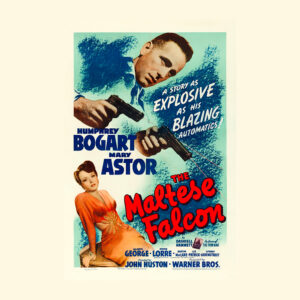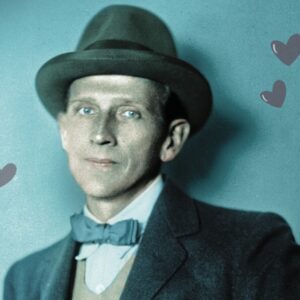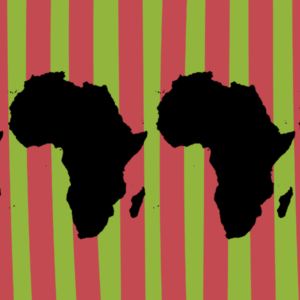
The New Literature of MMA
On the 21st Century Writing About a Very 21st Century Sport
Back in April, with some fanfare although not as much as you might have expected, Governor Cuomo signed a bill legalizing professional mixed martial arts in New York, making it the last state in the US to sanction an activity that used to be compared to human cockfighting and now generates over a billion dollars in annual worldwide revenue, with a bevy of charismatic stars and a growing fanbase that’s the envy of just about every other sport around. The reasons why New York held out for so long are byzantine and mostly beside the point. (The Culinary Workers Union was involved; disgraced Assemblyman Sheldon Silver, too.) The point is that it will now be possible to watch men and women punch, kick and grapple one another into submission and/or unconsciousness in all 50 states with some modicum of confidence that beforehand those men and women were blood tested and afterwards paid.
The first big fight night, UFC 205, is scheduled for November 12th at Madison Square Garden. At a time like this, a certain kind of American will start to wonder, what do the literary types have to say about all this? The literary types having presumably made a few early forays into the cage, learning what they could and recording their insights and observations, laying the groundwork, so to speak, that the rest of us tenderfoots might reach a kind of peace with what’s to come—for the sport and for the fighters; for fans and casual admirers both. Or anyway that was the bend of my thinking back in April, as I watched the clips of Governor Cuomo signing the bill into law, with the great Ronda Rousey standing behind him, looking very professional in a black blazer but also fully prepared to demonstrate her famous arm bar should the Governor have any second thoughts about endorsing the long-awaited legislation.
Curious and holding a library card, I set out to find the best of a new literary wave.
* * * *
Boxing literature has a storied past in this country. Luminaries like Mencken and Damon Runyan established the form’s bona fides. James Baldwin tried his hand. Richard Wright accepted his first journalism assignment and produced the now classic “Joe Louis Uncovers Dynamite.” AJ Liebling and WC Heinz were the post-WWII masters, then Norman Mailer, George Plimpton, Hunter S. Thompson, George Kimball, Gerald Early, Joyce Carol Oates and Katherine Dunn all took up the mantle, at one time or another. No physical activity except for war and sleeping with other people’s spouses has contributed more to the American canon. But boxing writing, like the sport itself, has mostly had its heyday, and if the early returns are any indication, 21st century fight literature will find itself not in the ring but in the cage, charting the rise and fall of various wrestling savants and jiu-jitsu kings.
According to my recent (highly subjective) study, there are already two MMA books worthy of standing beside the 20th-century greats: Thrown by Kerry Howley, and The Longshot by Katie Kitamura. Both are about fighters more or less on the margins, men struggling keep up with the evolving demands of their chosen trade.
Let’s consider Howley’s fighters first. One thing to know about them is they are real: Sean Huffman and Erik Koch are their names. You can look up their fight records on mixedmartialarts.com (Huffman, 19-33-0; Koch 15-4-0). I only mention it because the narrator of Thrown, the woman who follows Huffman and Koch around the country, reporting on their ups-and-downs—the training sessions, the entourages, the weight swings, the paternity issues, the fights in St. Louis, Louisville, New Orleans and Las Vegas—is named Kit, and unlike the fighters, Kit is not real. She is something else, an avatar designed by Howley in order to tell her story from a slight remove. Kit (not Howley) is a PhD candidate focused on phenomenological inquiry, until one day she ducks out of an academic conference and discovers the Midwest Cage Fighting Championship in a conference room down the hall. The fights seem to her a kind of portal to the raptures described by her philosopher heroes, Nietzsche and Schopenhauer. After that first experience, she effectively drops out of school to hang around with fighters. Thrown is full of eccentric touches like that. They’re the book’s greatest charm, aside from Howley’s insightful, uproarious writing, and also her exceptional subjects: Sean, the veteran fighter, who has what is known in combat sports as a good chin (the ability to be hammered over and over without being knocked out), and Erik, the mercurial (possibly sociopathic) up-and-comer, who’s lived for years inside a protected circle of friends and family, bumming rides, borrowing cash, and accepting their unwavering adoration of his God-given talents.
Kit describes the two contrasting figures in her own inimitable style:
“In Sean I had an unbreakable, unflappable veteran, rock hard and lumbering . . . [Erik] was a blossoming prodigy. Not a shorn tendon in his sprightly form. Nose straight, undereyes unlined, skin taut and unbruised…And seeing him for the first time, I was struck with a thrilling fear at the thought of his fragility.”
Like any fight book worth its salt, Thrown is, on one level, about fighters chasing titles and demons. But more fundamentally it’s a book about us, the spectators, and our persistent inclination to find something spiritual, or at any rate ineffable, in watching other people endure pain. Howley’s inquiry goes far beyond the ring and the training mats. Perhaps the most memorable—certainly the most chilling—scene in Thrown takes place after hours at a casino buffet, as Erik, starved from losing thirty-five pounds to make weight, walks past the empty catering trays, imagining which dishes he’ll eat after the match is done: pizza, shrimp scampi, poached eggs . . .
There’s comedy and heartbreak in a scene like that but also something transcendent. When Erik comes across a perplexed casino employee, he explains his behavior in the only way that makes any sense: “I am a fighter . . . I want to come here tomorrow.”
Kitamura’s The Longshot is, in many ways, the more traditional fight book. First off, it’s a novel. The characters are fictional and there are no philosophy school dropouts hanging around anywhere. There is Cal, the fighter, and Riley, the trainer, and the two of them drive to Tijuana for a title shot. Their story takes place over the span of a few days, before the main event. Much of it is told from Riley’s perspective, which is another of the great traditions in fight literature, where the trainer is such a useful fellow to have around—identifying with the fighter to such a degree that he can nearly feel the blows as they land and the knees as they weaken, but then again he is also outside the ring (or the cage, as the case may be) and capable of observing with a relatively objective, expert eye. The Longshot is a descendant of Heinz’s The Professional, that mid-century masterpiece, which laid bare all the glitz, sleaze and pathos boxing had to offer en route to a shot at the middleweight championship. Kitamura’s prose, like Heinz’, is lucid and often surprising, especially when describing the melancholy of a fight’s end, or the nuances of a fighter at rest: “The face itself was solid . . . Everything had been broken and then put back together. Everything still worked, it was just the face had got lost in the middle of it all.”
But where Kitamura breaks with tradition, just as boldly as Howley, is in her approach to the action of a fight, which seems equally informed by modern dance theory and art criticism as it is by Heinz or by Liebling’s classic New Yorker accounts.
The Longshot finds beauty in the mingling bodies, then strips away all artifice, cliche and glamour to find something more fundamental still: a controlled, creative chaos.
“They were very young and so they fought a ten-minute round without slowing. Toward the end of the round, the older fighter dropped the younger kid to the mat. A nice, tricky move, a clinch that turned into a hard left hook. The younger kid walked right into it. He fell to the mat, eyes alert, already blocking. He didn’t look dazed but he was falling.”
And later, in the pivotal match-up:
“There was no thought running from the brain down to the feet, there was nothing but the feet moving. His body surfed and floated on the current of his feet and his eyes watched Rivera surge straight forward. Pure counterpoint. They were working in pure counterpoint. He was moving from side to side while Rivera moved forward like a cut.”
Perhaps you can imagine lines like those from Heinz, or in a Hemingway fistfight scene, but I can’t, and it seems to me that’s a function not only of Kitamura’s style but also her subject. This is MMA, not boxing, and not even a back alley brawl. Limbs intertwine in a way they never could in another kind of fight, and Kitamura’s prose–clipped and nimble—finds a way of capturing the activity’s singular kinetics.
This is 21st century fight writing, perfectly calibrated for a new kind of fight.
* * * *
Earlier I said I would find out what the literary writers—whom we can now call Howley and Kitamura—might have to say about the looming and near-complete professionalization of the sport, now that New York has pushed aside the culinary workers’ concerns and fallen in line with its forty-nine sister states, who have, for the last fifteen years or so, gone about proving that MMA fights in general and the UFC brand of MMA fights in particular are a kind of well-serviced, user-friendly ATM machine. I might as well admit up front that I went into this with some reservations, born mostly of ignorance and sentimentality and my own lingering athletic regrets.
My fear, I suppose you could call it, was that the figures I had grown so fond of—fighters on the margins, like Cal or Sean Huffman, men blessed with great and mysterious physical gifts and no guile—would have trouble finding a place in today’s corporate-friendly, state legislature-endorsed, Madison Square Garden-hosted MMA.
As it turns out, Howley and Kitamura don’t share my concerns. I got in touch with them recently and asked about the sport’s surging popularity and financial clout.
“People expect you to say these fighters are silent, brutal, and removed, or that they’re walking around with inferiority complexes,” Howley told me. “My sense was they just have this quiet confidence, energy, and an incredible gentleness. Nothing about that personality agitates against corporatization. A sense they don’t want to conform to society? Sure. But maybe that will change as MMA gets more acceptable.”
Kitamura was of the same mind. She thought the sport would do just fine and said my questions were really about nostalgia, and while she’d always linked MMA and nostalgia in her own mind (it’s “more ephemeral than other [sports], the downfall somehow more calamitous”), she had faith in the fighter’s ability to adapt to the new era. “MMA has always evolved very rapidly, both on the level of technique and infrastructure,” she wrote to me in an email. “In that sense, [MMA] doesn’t really allow much space for nostalgia. To be honest, I primarily hope that fighters across the board are being paid better than they were when I was writing about the sport.”
She was right, of course. They both were. I felt a little foolish for having asked.
There’s one more thing I’d like to mention, because it came up in conversation with both authors, and because it’s something others may have noticed, too. Howley and Kitamura are women. I asked if they thought that women had special insight into the sport, or any advantage in writing about it. Howley said that people usually asked her the opposite, whether it was a burden to overcome. “Really it was an advantage right from the beginning,” she said. “A male reporter discovering the world of MMA always has a boring side story where he earns the respect of the famous fight coach. [Ed. – confirmed] There are all these questions of competing masculinity. I didn’t have that buzzing underneath my relationships. Fighters could open up around me in a way that would have been impossible if there was something more at stake.”
Kitamura told me about being backstage at the fights. Once, she brought her brother, a tattoo artist, and noticed that fighters immediately began engaging in a “series of small rituals” intended to find out where they all stood in the pecking order. By contrast, when she was alone, she “never felt that the fighters or trainers were performing.” She felt “invisible”—free to hone her art as the fighters honed theirs.
* * * *
Next week in New York City, Eddie Alvarez will fight the Irishman Conor McGregor for the lightweight UFC title. Most likely Ronda Rousey, and maybe even Governor Cuomo will be in the wings at MSG, surveying the early returns on their legislation. I didn’t think to ask whether Howley or Kitamura will be watching, or if either has been commissioned to cover the fight. Regardless, I’d like to believe that some young author—more likely than not a woman—will be backstage observing the sport’s many eccentricities, or at a bar with pay-per-view, noticing a move whose significance is lost on the rest of us, and quite possibly it won’t be long before we have another great fight book to add to the list. We’re still in the early days of the form, after all.
This is the literature of the ascendancy, or before the fall, depending on your outlook.
Dwyer Murphy
Dwyer Murphy's new book is The House on Buzzards Bay, available June 24, 2025 from Viking Books. He is the author of An Honest Living and The Stolen Coast, both of which were New York Times Editors’ Choice selections. He is the editor in chief of Literary Hub‘s CrimeReads vertical



















